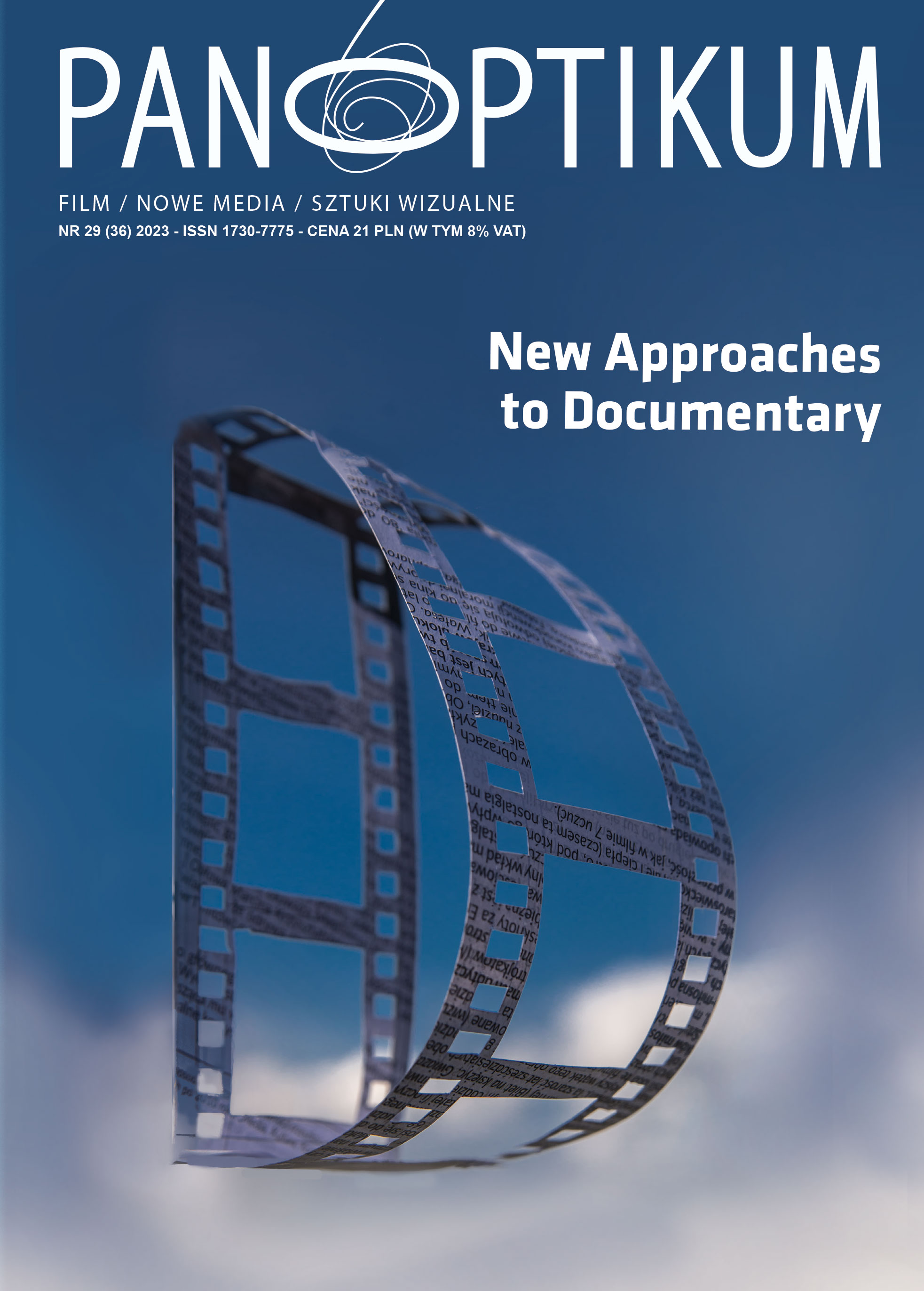Defining documentary
DOI:
https://doi.org/10.26881/pan.2023.29.01Słowa kluczowe:
documentary cinema, definitions, specifity, textual features, working on the setAbstrakt
The aim of this paper is to define documentary film. After a brief review of existing definitions, the author proposes his own. The methods of working on the set and the textual features of the films are considered as distinguishing documentary filmmaking from other film genres. Issues such as the filmmakers’ interference with the filmed reality, the criteria for distinguishing between fictional and non-fictional elements, the admissibility of special effects, the specificity of editing, and the place of the documentary film among other nonfictional genres are considered. The final definition is confronted with the most recent genres of documentary cinema, namely the animated documentary, the mockumentary and the web-documentary.
Downloads
Bibliografia
Aitken, I. (1990). Film and Reform: John Grierson and the Documentary Film Movement, Routledge: London.
Barsam, R.M. (1973). Nonfiction Film: A Critical History, Dutton and Co., Inc, New York.
Barsam, R.M (ed) (1976). Nonfiction film : theory and criticism, E.P. Dutton & Co: New York.
Bordwell, D.; Thompson, K. (1990). Film Art: an Introduction, The McGraw-Hill Companies, Inc: New York.
Carroll, N. (1996). From Real to Reel: Entangled in N-F Film. In idem, Theorizing the Moving Image, Cambridge University Press.
Dunne, P. (1946). The Documentary and Hollywood. Hollywood Quarterly 1, no. 2, January, pp. 166-172.
Edmonds, R. (1974). Anthropology on Film. A Philosophy of People and Art, Pflaum Publishing: Dayton.
Engle, H. (1965). Thirty Years of Social Inquiry. An Interview with Willard Van Dyke. Film Comment 3, no. 2, (Spring), pp. 24-37.
Geva, D. (2021). A Philosophical History of Documentary. 1895-1959. Palgrave Macmillan Cham.
Kieślowski, K. (2020). Documentary Film and Reality. In Mąka-Malatyńska, K. (ed). Theory of Practice. Łódzka Szkoła Filmowa, Łodź.
Kołodyński, A. (1981). Tropami filmowej prawdy. Wydawnictwa Artystyczne i Filmowe: Warszawa.
Leacock, R. (1961). For an Uncontrolled Cinema. Film Culture, nr 22-23.
Łepkowska, A. (1991). Fikcja jako możliwość. Z przemian prozy XX wieku. Universitas, Kraków.
Łoziński, M. (1976). Scenariusz a realizacja w filmie dokumentalnym. Film na Świecie, nr 3-4 (211-212).
Nichols, B. (1981). Ideology and the Image, Indiana University Press, Indianopolis.
Nichols, B. (1991). Representing Reality, Indiana University Press, Indianopolis.
Petric, V. (1978). Constructivism in Film, Cambridge University Press.
Plantinga, C. (1997). Rhetoric and Representation in Nonfiction Film, Cambridge University Press.
Przylipiak, M. (2004). Poetyka kina dokumentalnego. Wydawnictwo Uniwersytetu Gdańskiego; Wydawnictwo Pomorskiej Akademii Pedagogicznej w Słupsku: Gdańsk-Słupsk.
Przylipiak, M. (2006). Dialektyka powierzchni i głębi w filmie dokumentalnym. Kwartalnik filmowy nr 54-55.
Rotha, P. (1939). Documentary Film, Faber and Faber.
Salska-Kaca, M. (1989), Pomiędzy filmem awangardowym a dokumentalnym. In Film awangardowy w Polsce i na świecie, Ryszard Kluszczyński (ed), Łódzki Dom Kultury, Łódź.
Spottiswoode, R. (1950). A Grammar of the Film, University of California Press. Berkeley.
Vaughan, D. (1983). Portrait of An Invisible Man: The Working Life of Stewart McAllister, Film Editor. BFI: London.
Winston, B. (1995). Claiming the Real, British Film Institute: London.

 Uniwersyteckie Czasopisma Naukowe
Uniwersyteckie Czasopisma Naukowe









